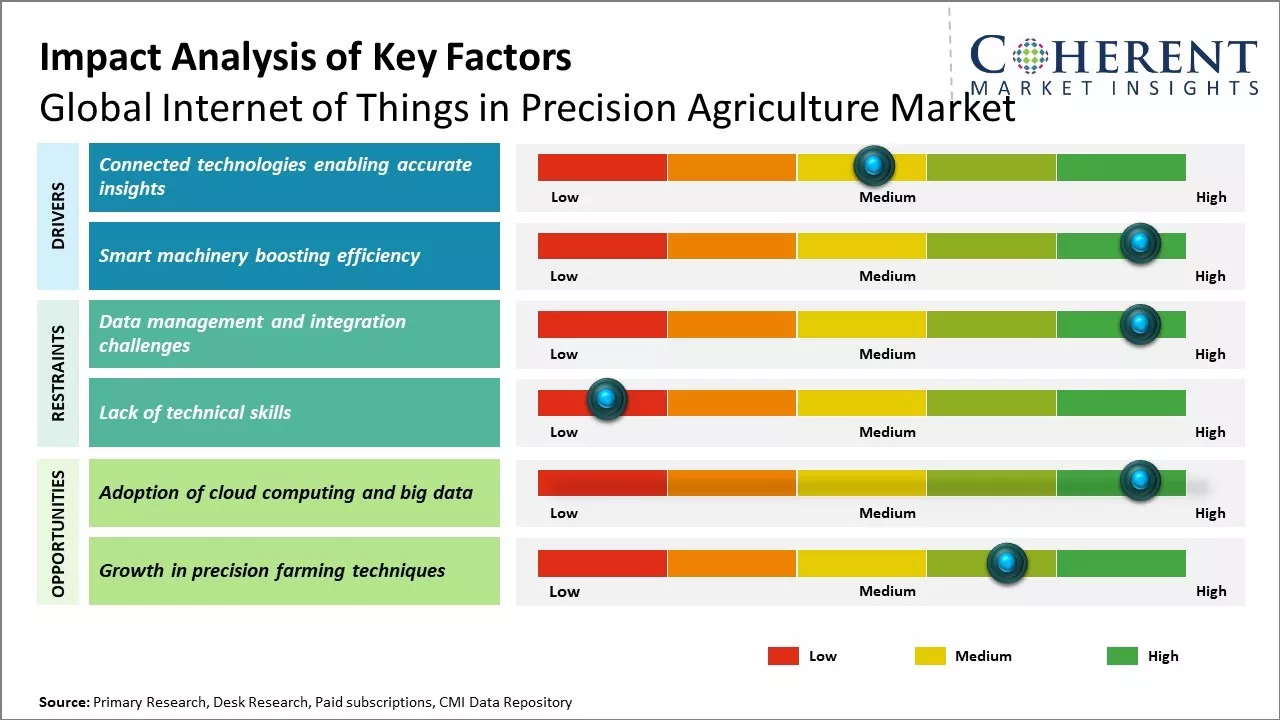Global Internet of Things in precision agriculture market is estimated to be valued at US$ 7.07 Bn in 2025 and is expected to reach US$ 18.83 Bn by 2032, exhibiting a compound annual growth rate (CAGR) of 15.0% from 2025 to 2032.

To learn more about this report, Request sample copy
IoT coupled with machine learning and artificial intelligence has helped farmers gain real-time insights about soil and climate conditions. This has enabled them to boost productivity and optimize resource utilization through precision agriculture techniques.
The market growth is driven by need for optimum use of resources and real-time monitoring of crops. Deployment of IoT sensors, drones and other smart devices allow farmers to remotely collect data related to moisture, temperature and fertility of soil. Analytics tools further help in yield estimation and produce grading. Rising requirement for food due to increasing global population can boosts need for precision agriculture and corresponding internet of things solutions globally.
Connected technologies enabling accurate insights
The ability of connected devices and technologies to generate accurate insights can drive the Internet of Things in precision agriculture market growth. Precision agriculture utilizes various technologies and devices such as sensors, GPS systems, drones and other equipment to collect vital field data. This data when combined with advanced analytics and IoT capabilities can provide actionable insights to farmers. Parameters such as soil moisture levels, ambient temperature, nutrient levels, and insect population that impact yield can be continuously monitored through connected sensors. Technologies like drones equipped with advanced cameras and sensors allow capture of field images at high resolutions. Image analytics helps identify issues such as diseases and insect attacks at an early stage when remedy is most effective.
The seamless connectivity between various devices and tools by IoT enables compiling field data from diverse sources into a unified platform. This big data when analyzed using techniques like predictive modeling, prescriptive actions and advanced forecasting generates robust insights. Thus, farmers can make well-informed decisions regarding optimal seed varieties, quantity of fertilizers and pesticides required, irrigation schedules and other farm operations. It helps to achieve higher yields while minimizing costs and wastage of resources. The insights also assist in planning and taking precautionary measures well in advance based on predicted weather patterns and their impact.
Joining thousands of companies around the world committed to making the Excellent Business Solutions.
View All Our Clients